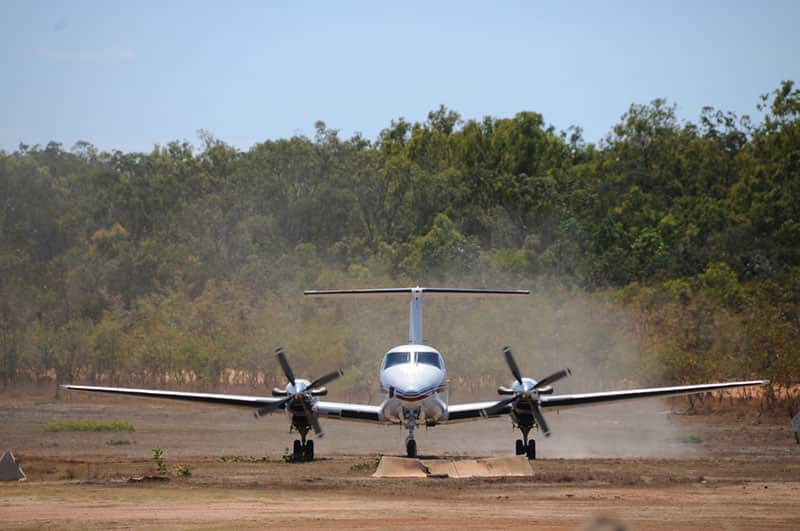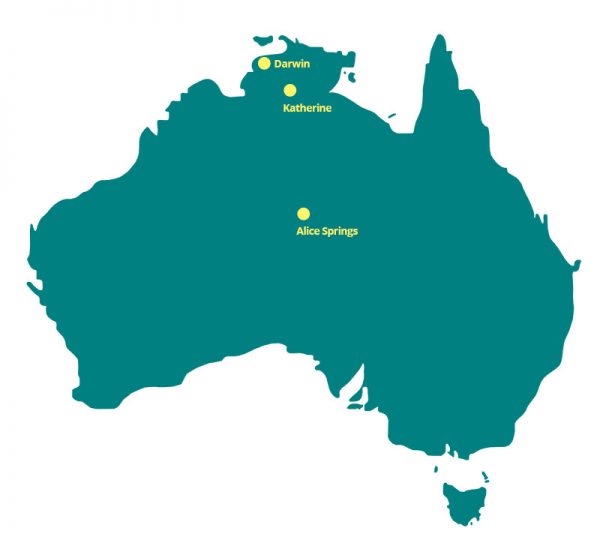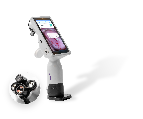
Rural and remote healthcare is a large burden in Australia; a massive country almost the same size as the USA with only 21 million people living across the entire continent.
Whilst a majority of its population live along the Eastern and South-Eastern Coast, its interior and further flung cities and townships, rely heavily on rural health organisations to deliver women’s healthcare services. Especially reliant on these services are under-resourced Aboriginal communities.
The Northern Territory’s Top End Health Service provides much-needed healthcare in Darwin and to remote Aboriginal communities, including for women’s health. To provide access to these services, a team consisting of one or two obstetrician-gynecologists plus a midwife travel via light plane, or in four-wheel drive vehicles over hundreds of kilometers of rough terrain, to conduct women’s health clinics, including carrying out procedures such routine gynecological examinations, colposcopies, and vulvoscopies.
Due to the difficulties of setting up and running remote clinics, many clinicians experience unique challenges to providing care including patients not arriving to the clinic as scheduled, patient loss-to-follow-up and not returning to clinics to receive results, and the inability to record images or remotely consult with peers for a second opinion.
“A more portable, easier to use colposcope would certainly make examinations easier to conduct,” infers Dr. Madhu Kolli, a Consultant Obstetrician and Gynaecologist with the Top End Health Service, who takes part in remote clinics and training for ob-gyn residents. “Also, examinations rooms at these clinics tend to be very small and larger colposcopes, like the one we currently use, are very heavy and difficult to maneuver in these type of tight spaces.”
“Additionally, the ability to be able to share patient cases and get a second opinion, when we are already out there conducting the clinics, would really help provide better care outcomes for patients,” she adds.
When I visited Australia’s most northern capital city in March, it was just recovering from Cyclone Marcus, which had left tens of thousands of people without access to power and drinking water; an added challenge to providing health services to remote areas, when roads and runways are washed out due to tropical deluge. Nevertheless, presenting the EVA System to remote health physicians in Darwin was inspiring; it was fantastic to meet the incredible people improving access to healthcare across the top end of the country.

Next, I headed to Alice Springs in Central Australia to present the EVA System to specialist outreach clinicians and remote areas nurses (RANs). Similar to Darwin, the specialist outreach team, made up of a travelling midwife and two ob-gyns, provide women’s healthcare to remote Aboriginal communities, some up to 500-1000 kilometers or more from Alice Springs; an important desert city right in the heart of Australia with a population of 25,000.
The team often travels by 4-wheel drive to outlying communities but are also flown out on charter flights or by the Royal Flying Doctor Service to more difficult to reach locations to conduct weekly or bi-weekly clinics; covering an area of 250,000 square kilometres and over 30 health clinics and adjoining smaller outstations and communities throughout the Northern Territory. The logistics of setting up these healthcare services are no easy feat.
“The plane arrives at the community airstrip at a preordained time and the local staff pick up the specialist outreach team in the local clinic vehicle. They are transported back to the health centre, where they are allocated a room to work from and set up the colposcopy unit and set out equipment needed for the days clinic,” according to Sandra McElligott, Remote Women’s Health Educator for the Central Australia Health Service. “These days are often very busy and full. The plane must leave to get back at last light to town so this determines their departure time. The same process is followed to return.”
This resource-intensive but necessary program ensures remote Aboriginal women get access to the same care that would be available in a regional centre.
The need for a hardy and portable colposcope with easy support features, which can help clinicians offer key women’s health services, like colposcopy, is paramount.
Again, presenting the EVA System to specialist outreach clinicians, made evident the challenges of providing health services in under-resourced communities, and how applications such as the EVA System can enhance remote and regional programs. Otherwise, patients would have to travel hundreds of kilometers to Alice Springs to access these potentially life-saving procedures.
EVA’s utility for rural health applications is huge. The portable EVA System’s ability to capture high-quality images and videos with up to x16 magnification with a 9.06mm focal length and 300-425mm/11.8-16.7in working distance, add digital filters and annotations directly to images, and consult with peers via secure case-sharing enables remote services providers to offer better access to colposcopy and cervical, vaginal, and vulva examinations.
Importantly, the EVA System allows for online connectivity for telehealth-based consultation or supervising training, and for uploading case files to a secure online server, only accessible to the provider. However, in remote areas where a WiFi connection is inaccessible or if clinicians prefer to adopt a physical case-sharing system, patient data can be stored locally on the EVA device; until which time a WiFi connection is found and the files are updated automatically by the system. Alternatively, if this option is disabled, case files can be downloaded directly to a laptop or computer ensuring effective patient management, regardless of location.
The EVA System has been granted regulatory clearance in Australia in April 2018 and we are thrilled to soon offer the EVA System for sale, helping clinicians expand access to women’s healthcare services throughout the country. Stay tuned for more updates about the EVA System in Australia in the near future.
For more information about purchasing the EVA System in Australia, please contact sales@mobileodt.com








